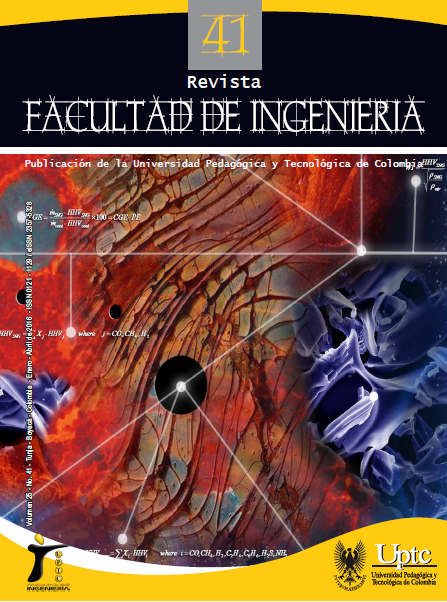Concrete prepared with rain water as an environmental contribution from the construction

Abstract
This article describes the preparation of concrete using rain water and its performance compared with those elaborated with conventional drinking water. The samples made were studied in terms of resistance to compressive stress at ages of 1, 3, 7, 14, 28, 56 and 90 days, also analyzing their microstructure by electronic microscopy scanning (EMS) and characterizing the water involved by a certified laboratory. After analyzing the results, it looks likely that the construction of the concrete can be done in a more thoughtful way regarding the use of water resources, without sacrificing its mechanical, stability and aesthetic qualities. In turn, may be thought the possibility to establish a practice that can be replicated in the Colombian context.
Keywords
sustainable construction, rain water, concrete
References
- ICONTEC. Norma Técnica Colombiana NTC 3459: Agua para la elaboración de concretos. Bogotá D.C., Icontec, 2001.
- J. Arroyave. “Evaluación económica de la captación de agua lluvia como fuente alternativa de recurso hídrico en la Institución Universitaria Colegio Mayor de Antioquia”. Medellín, Revista de Producción Más Limpia, Vol. 6., N.° 1, pp. 76-84, 2011.
- AMVA; Procuraduría. Informe de monitoreo de calidad del aire en el Valle de Aburrá. Medellín: Ed. Área Metropolitana del Valle de Aburrá, 2010.
- C. Bedoya. Construcción sostenible, para volver al camino. Medellín: Ed. DIKÉ-Cátedra UNESCO de Sostenibilidad, 2011.
- AMVA. Documento base para la formulación de una política pública de construcción sostenible en el Valle de Aburrá. Medellín: Ed. Área Metropolitana del Valle de Aburrá, 2010.
- A. Salazar. Impacto ambiental de los materiales de construcción en Colombia. Estudio de Caso ciudad de Cali. Bogotá: Ed. UPME, 2012.
- I. Schifter. La huella invisible: humos, polvos y perfumes. México D.F.: Fondo de Cultura Económica, 2009.
- AMVA. Red de calidad del aire del Valle de Aburrá. Medellín, 2014. Recuperado de: http://www.metropol.gov.co/CalidadAire/isodocRedAire/Resumen%20anual%20calidad%20del%20aire%202014.pdf.